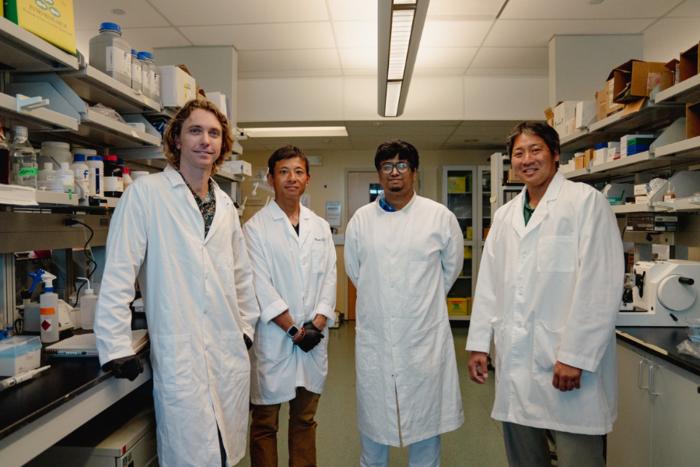For decades, scientists have dreamt of a future where genetic diseases, such as the blood clotting disorder hemophilia, could be a thing of the past. Gene therapy, the idea of fixing faulty genes with healthy ones, has held immense promise. But a major hurdle has been finding a safe and efficient way to deliver those genes.

Credit: University of Hawaii
For decades, scientists have dreamt of a future where genetic diseases, such as the blood clotting disorder hemophilia, could be a thing of the past. Gene therapy, the idea of fixing faulty genes with healthy ones, has held immense promise. But a major hurdle has been finding a safe and efficient way to deliver those genes.
Now, researchers at the University of Hawaiʻi’s John A. Burns School of Medicine (JABSOM) have made a significant breakthrough in gene editing technology that could revolutionize how we treat genetic diseases. Their new method offers a faster, safer, and more efficient way to deliver healthy genes into the body, potentially leading to treatments for hundreds of conditions. This research was recently published in Nucleic Acids Research.
Here’s how it works.
Current methods can fix errors in genes, but they can also cause unintended damage by creating breaks in the DNA. Additionally, they struggle to insert large chunks of genetic material such as whole genes.
The new technique, developed by Dr. Jesse Owens along with his team Dr. Brian Hew, Dr. Ryuei Sato and Sabranth Gupta, from JABSOM’s Institute for Biogenesis Research and Cell and Molecular Biology Department, addresses these limitations. They used laboratory evolution to generate a new super-active integrase capable of inserting therapeutic genes into the genome at record-breaking efficiencies.
“It’s like having a “paste” function for the human genome,” said Dr. Owens. “It uses specially engineered ‘integrases’ to carefully insert healthy genes into the exact location needed, without causing breaks in the DNA. This method is much more efficient, with success rates of up to 96% in some cases.”
“This could lead to faster and more affordable treatments for a wide range of diseases, potentially impacting hundreds of conditions with a single faulty gene,” said Dr. Owens.
Faster Development of Treatments and a Broader Range of Applications
The implications of this research extend beyond gene therapy. The ability to efficiently insert large pieces of DNA has applications in other areas of medicine.
When making cell lines to produce therapeutic proteins, the gene encoding the protein is usually randomly inserted into the genome, and it rarely lands in a location in the genome that is good for production. This is like searching for a needle in a haystack. Additionally, finding a cell with the gene inserted correctly and producing the desired protein can take many months.
Instead of searching for a needle in a haystack, Dr. Owens’ technique makes a stack of needles. It delivers the gene directly to the desired location, significantly speeding up the development process.
“JABSOM takes pride in nurturing talented researchers like Jesse Owens, whose work has the power to create a global impact,” said Sam Shomaker, dean of the University of Hawaiʻi John A. Burns School of Medicine. “This research, conducted in our lab in the middle of the Pacific, has the potential to significantly improve the way we treat genetic diseases.”
Dr. Owens’ team is exploring how this technique could accelerate the development and manufacture of biologics and advanced therapies such as antibodies. Currently, finding the right cell line for efficient production can be a time-consuming process. However, Dr. Owens’ new genome engineering tool can reduce the cell line development timeline and accelerate the manufacture of life-saving therapeutics.
Dr. Owens has founded a 501c3 nonprofit aimed at supporting local research in genetic engineering here in Hawaii, details can be found on the Hawaii Advanced Genetic Medicine Foundation’s website: HawaiiAGMF.org.
Journal
Nucleic Acids Research
Method of Research
Experimental study
Subject of Research
Cells
Article Title
Directed evolution of hyperactive integrases for site specific insertion of transgenes
Article Publication Date
2-Jul-2024



